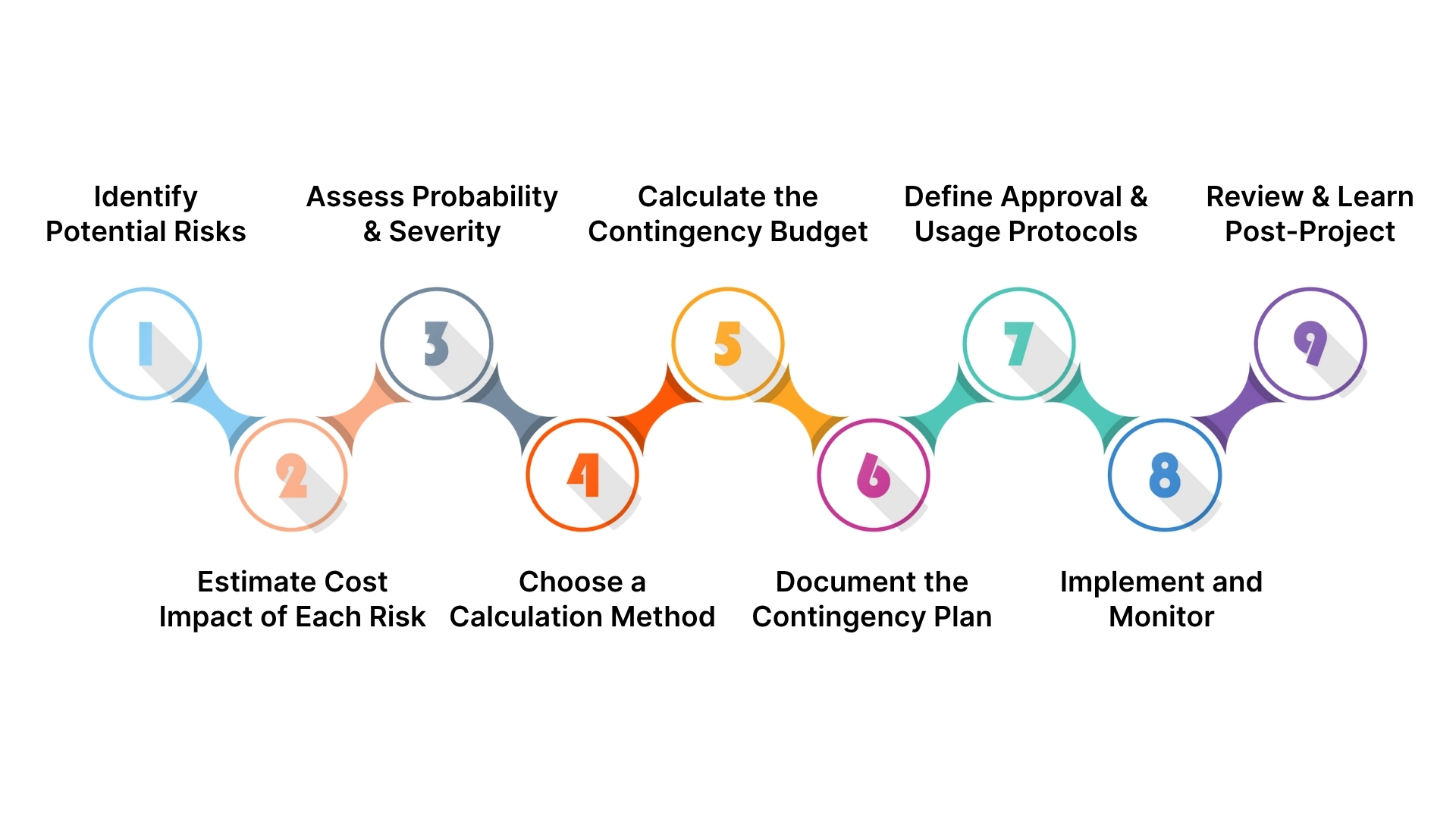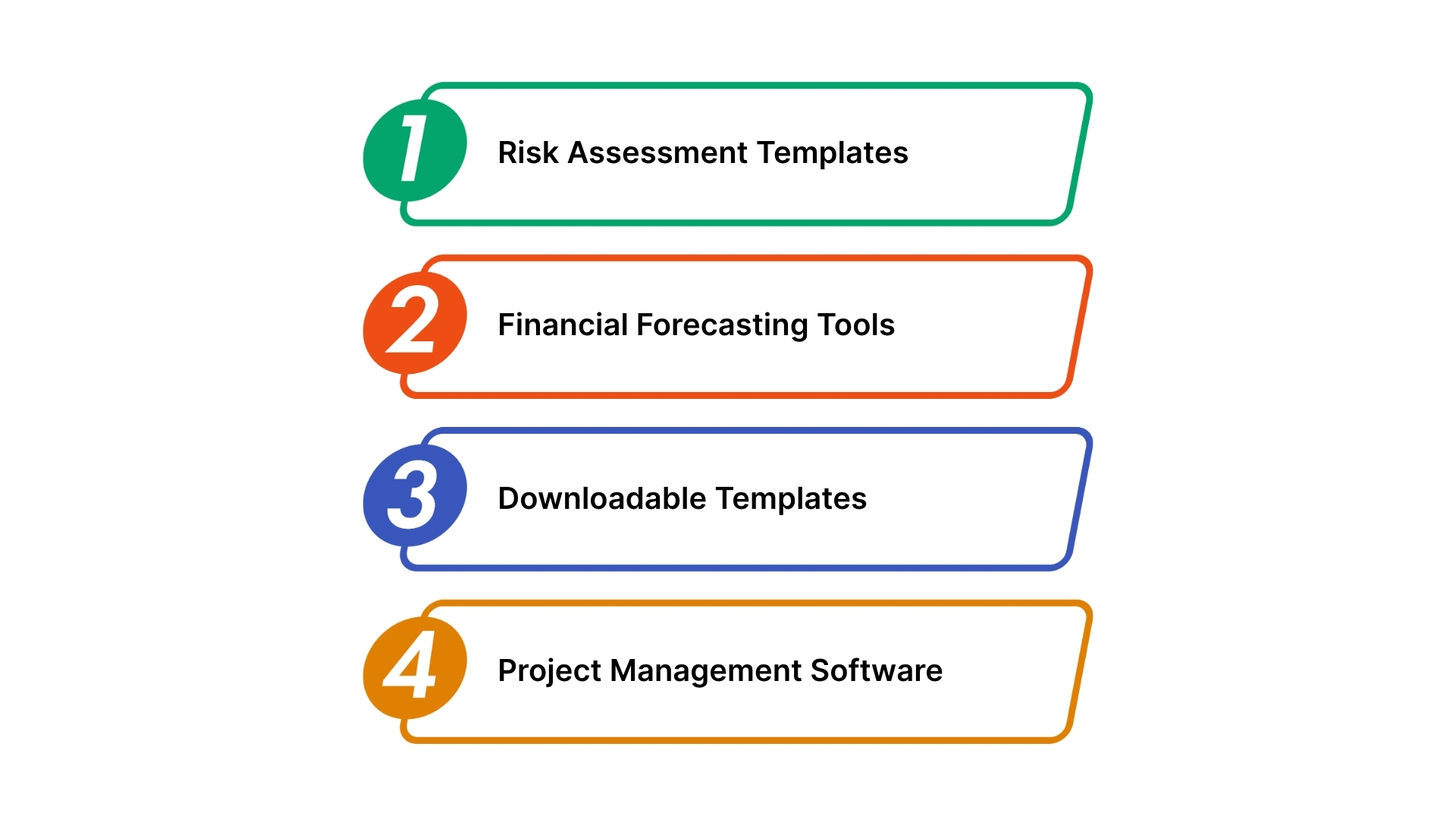
You can plan every detail of a project, but unexpected costs or delays can still arise. In Saudi Arabia, where market conditions can shift quickly as the country advances toward Vision 2030, unanticipated expenses are common. Without a contingency budget, even the most meticulously planned projects can exceed budgets or miss deadlines.
A contingency budget serves as a financial safety net, giving you the flexibility to manage unexpected challenges while maintaining quality and meeting project goals. For small and medium enterprises in Saudi Arabia, this kind of financial buffer can be the difference between smooth project delivery and costly setbacks.
In this article, we’ll explain what a contingency budget is, why it's important and how to create, and manage one effectively using proven contingency budget project management practices.
A contingency budget is a reserve of funds set aside to cover unexpected costs during a project. It acts as a safety net, ensuring your project can continue smoothly without compromising quality, timelines, or scope.
The main purpose of a contingency budget is to provide financial flexibility. A McKinsey survey found that large-scale projects often exceed their budgets by 30–45%. Even minor setbacks can disrupt schedules and cash flow without a financial buffer.
Industry standards recommend allocating 5–15% of the total project cost for contingency, depending on project complexity and risk. Planning ahead ensures your team can handle surprises efficiently, protect the budget, and deliver successful project outcomes. Let’s explore why it’s particularly important for small businesses in Saudi Arabia.
Also read: What is budgeting, how is it prepared, and what are its different types?

Small businesses and startups in Saudi Arabia often operate with limited resources and tight margins. In a market that can shift rapidly, whether due to delays in local suppliers, fluctuating material costs, or updates to VAT and other regulations, even minor setbacks can significantly affect project timelines and business stability.
A well-defined contingency budget helps you:
A contingency budget ensures that small businesses in Saudi Arabia can navigate surprises, maintain smooth operations, and complete projects successfully. Now, let’s see how a contingency budget differs from other risk management strategies, such as mitigation plans.
Also Read: Saudi Businesses Rejoice! HAL Accounting Software Is Here To Revolutionize Your Finances
Both contingency plans and risk mitigation plans are essential for managing project risks, but they serve distinct purposes. Understanding the difference helps Saudi businesses prepare effectively for uncertainties in local markets.
A mitigation plan helps prevent problems, while a contingency plan provides a clear response if problems occur. Both work together to keep projects on track and maintain operational stability. Let’s discuss when to use a contingency plan and how it complements your overall risk strategy.

A contingency plan is your backup strategy for when risks occur despite preventive measures. While risk mitigation focuses on reducing the likelihood of problems, a contingency plan assumes an issue has happened and provides clear steps to respond.
You should use a contingency plan in situations such as:
Example: For a website launch in Riyadh involving developers, designers, and marketers:
By planning for these predictable risks in advance, your business can handle surprises effectively, maintain smooth operations, and achieve successful project outcomes. With the importance of a contingency budget clear, let’s explore how to create one effectively to keep your projects on track in Saudi Arabia.

Even with careful planning, unexpected costs or delays can arise. In Saudi Arabia, where supply chains, regulations, and market conditions can shift quickly, a contingency budget is essential. It provides a financial safety net, helping you stay in control and keep projects on track without compromising quality or scope.
Here’s a step-by-step guide tailored for businesses in Saudi Arabia:
Start by listing all risks that could impact your project. These can be internal, like resource shortages or scope changes, or external, such as delayed shipments from suppliers, changes in VAT regulations, or sudden market fluctuations. Use a risk register to document each risk, estimate its likelihood, and assess potential impacts on costs and timelines.
Quantify the potential financial impact. For example, if there’s a 20% chance that equipment costs could rise by SAR 50,000, the expected impact would be SAR 10,000 (20% × 50,000). Base estimates on historical data from similar projects to ensure accuracy.
Evaluate how likely each risk is to occur and how severe its impact would be. Allocate more contingency funds to high-probability, high-impact risks. Low-probability, low-impact risks should still be covered, but with smaller allocations.
Select the method that fits your project’s complexity and data availability:
Use the formula:
Contingency Budget = Total Project Cost × Contingency Percentage
For example, a SAR 1,000,000 project with a 10% contingency sets aside SAR 100,000. Distribute funds based on risk priority, focusing on high-impact risks while covering smaller risks as well. Document your rationale for transparency.
Detail the identified risks, estimated costs, allocation of funds, and calculation methods. This ensures accountability and serves as a reference for stakeholders.
Set rules for who can authorize the use of contingency funds and under what circumstances. This prevents misuse and ensures funds are reserved for genuine unforeseen costs.
Regularly track actual spending against the contingency budget. Adjust allocations as new risks emerge or existing risks are resolved. Keep stakeholders informed to maintain trust.
After completion, analyze how contingency funds were used. Identify which risks occurred, which were overestimated, and which were underestimated. Apply these insights to refine future budgeting, improving accuracy and planning.
After identifying risks and estimating their impact, the next step is deciding how much to set aside. Choosing the right calculation method ensures your contingency budget is realistic and ready for unexpected challenges.

Accurately calculating a contingency budget ensures your project can absorb unexpected costs without affecting quality or timelines. Depending on your project’s risk profile, complexity, and available data, methods generally fall into deterministic and probabilistic categories.
Best for simple projects with stable conditions:
Key Point: Simple and easy to implement but may not account for multiple risk outcomes.
Ideal for complex, high-risk projects where multiple outcomes are possible.
Key Point: Offers precise financial safety but requires more data and analysis.
Having a contingency budget is only useful if it’s actively managed. Without proper oversight, even well-planned funds can fall short when unexpected costs arise.
Also read: Understanding Accounting Basics: Key Concepts Explained

Managing your contingency budget effectively ensures funds are available when unexpected costs arise. Here’s a step-by-step guide for Saudi small businesses and startups:
Tip: Combining documentation, regular review, and technology ensures your contingency budget truly protects your project while keeping operations smooth.
Now, let’s explore the tools available to streamline contingency planning and budgeting for projects in Saudi Arabia.

Using the right tools can make contingency planning more accurate, efficient, and manageable. Consider the following:
HAL ERP is a powerful tool that helps businesses manage projects efficiently, stay on budget, and meet deadlines. It’s designed for Saudi companies, keeping local regulations, including ZATCA compliance, in mind while supporting smooth business operations.
Many leading companies across industries in Saudi Arabia have benefited from HAL ERP. Check the success stories to see how it can transform your project management.

Contingency planning is a key part of project management and can be the difference between a project succeeding or failing. While you can't foresee every challenge, having a clear plan and a contingency budget allows your team to handle risks efficiently, keeping timelines, costs, and quality on track.
A well-designed contingency budget project management strategy provides the financial flexibility to address unexpected issues without disrupting the project. It safeguards both your project's progress and overall financial stability.
Take control of your project management with confidence. HAL ERP offers tools to help you plan, manage, and execute projects smoothly. Book a free demo today and simplify your project management with HAL ERP.
1. What is a contingency budget in project management?
A contingency budget is a reserved amount of money set aside to cover unexpected costs or risks that may arise during a project. It acts as a financial buffer to keep the project on track.
2. What is an example of a budget contingency?
Suppose your construction project faces material cost increases due to supply issues. The contingency budget covers these extra expenses without affecting the overall project budget.
3. What is a 10% contingency?
A 10% contingency means setting aside 10% of your total project cost as a backup fund for unforeseen expenses. It's a common benchmark for managing project uncertainties.
4. What is the 5-point contingency plan?
The 5-point contingency plan involves identifying risks, assessing their impact, developing response strategies, assigning responsibilities, and regularly reviewing the plan for effectiveness.
5. How much should contingency be in a budget?
Typically, a contingency budget ranges from 5% to 15% of the total project cost, depending on the project's size, complexity, and level of uncertainty.
6. Who approves the use of contingency funds in a project?
Typically, the project manager or finance lead approves the use of contingency funds, ensuring they’re spent only when justified by valid project risks or unforeseen events.
7. What is the difference between contingency and reserve funds?
A contingency fund is for identified risks with known probabilities, while a reserve fund (or management reserve) covers completely unforeseen or unknown risks. Both act as financial safeguards but serve different purposes.